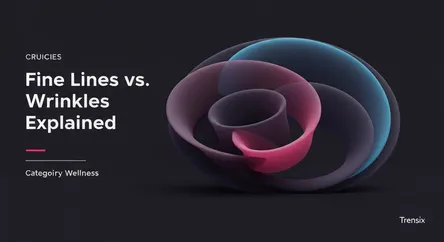Wellness
Fine Lines vs. Wrinkles Explained

Understand the key differences between fine lines and wrinkles, why they form, and how to effectively address these common signs of aging.
What is it?
Fine lines and wrinkles are both signs of skin aging, primarily distinguished by their depth. Fine lines are shallow, subtle creases on the skin's surface, often considered the first stage of aging. Dermatologists define them as being less than 1mm deep. Wrinkles are deeper, more pronounced folds that develop as the skin loses collagen and elastin, which provide structure and flexibility. Repetitive facial expressions, sun damage, and the natural aging process cause fine lines to eventually deepen and become wrinkles.
Why is it trending?
The conversation around fine lines and wrinkles is consistently popular due to a growing interest in preventative skincare and accessible treatments. Consumers are more educated than ever, seeking specific solutions for different stages of skin aging. The rise of "prejuvenation" has younger demographics adopting anti-aging routines to delay the onset of fine lines. Furthermore, the constant innovation in both topical products, like retinoids, and non-invasive cosmetic procedures, such as fillers and laser therapy, keeps this topic at the forefront of beauty and wellness discussions.
How does it affect people?
Fine lines and wrinkles are a natural part of aging that everyone experiences. For many, they are a significant cosmetic concern that can impact self-perception. This drives people to seek solutions ranging from over-the-counter creams to professional dermatological treatments. Understanding the difference helps individuals make targeted choices; a hydrating eye cream might suffice for fine lines, while deeper wrinkles may prompt consideration of treatments like Botulinum toxin (Botox) or dermal fillers for more noticeable results. This knowledge empowers people to address skin aging in a way that aligns with their personal goals.